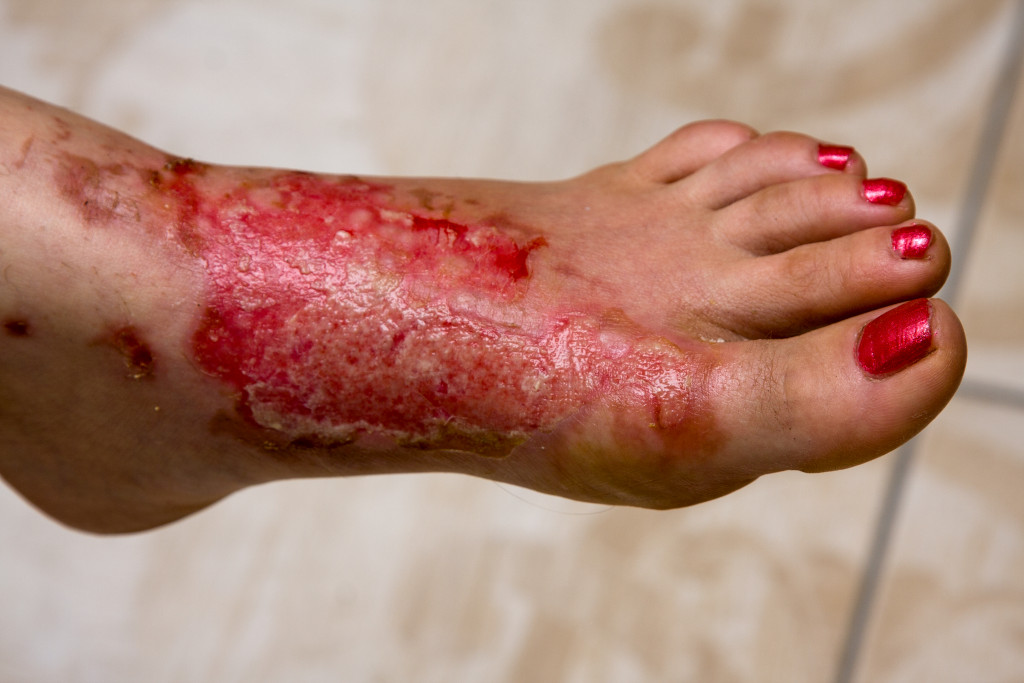Having a minor burn or two while cooking happens quite often to many people. It’s normal, especially when you’re dealing with an open flame and hot surfaces. However, some burns are not as minor and are more harmful.
With a multitude of medical emergencies, burns are one of them. As good health is necessary for survival, many entrepreneurs are venturing into a medical franchise or anything related to the industry. The need for these services is a trend less likely to die down.
Depending on the severity, the burn may require immediate medical attention. To remain alert and ready, here are some things to know about burns.
Common Causes of Burns
Although open flames are the most common way a person can get a burn, there are other causes of burns. You can have friction burns, cold burns, thermal burns, radiation burns, and chemical burns. In case you haven’t noticed, some of these burns can be acquired at home. Cooking in the kitchen, cleaning with strong cleaning products, and fixing electrical issues can make anyone vulnerable to burns. Knowing this, it’s essential to limit access to burn-causing objects at home from children. But it’s always best to remain alert and careful when dealing with these things to prevent anyone from getting hurt.
Classification of Burns
Burns are classified according to severity so that each burn can be given the amount of medical attention necessary. Although minor burns can easily be treated at home, major burns need professional medical attention as soon as possible. To be better prepared during these accidents, it’s good to be familiar with the classification of burns. This gives you an idea of how deeply and severely the burn has penetrated the skin.
First-degree Burns (Superficial Burns)
Did you know that getting sunburn is considered a first-degree burn? Although it can be painful and annoying to deal with, it doesn’t necessarily impair a person’s ability to function. First-degree burns are easily treated with homemade remedies.
Only the epidermis, or outer layer of skin, is affected by first-degree burns. There are no blisters on the burn site, but they may appear red, dry, and have a stinging feeling. Long-term tissue damage is uncommon, and it usually happens as a change in skin color. These heal within seven days.
Second-degree Burns (Partial Thickness)

Second-degree burns affect the epidermis, the outermost layer of skin, and a portion of the dermis, the skin’s lower layer. The burn site will appear red, blistered, swollen, and feel painful. This heals within 14 days.
To treat the burn, rinse it with cool water for about 15 to 30 minutes. You can also apply a cool compress or place the burned area in a basin of cool water. This lowers the skin temperature, thus easing the pain. After this, gently wash the area with clean water. Don’t be surprised when some burned skin washes away with the water. Avoid breaking any of the blisters and applying any product on the burned surface. This traps the heat inside the burn. After washing, use a clean towel or gauze to pat the area dry. Wrap or bandage the area unless the blisters have not broken open. If they have, do so but loosely to avoid putting pressure on the burn.
Third-degree Burns (Full-thickness)
The epidermis and dermis are both destroyed in third-degree burns. The burn can penetrate the skin’s deepest layer, which is the subcutaneous tissue. As a result, the burned area may seem white, blackened, or charred.
Third-degree burns are often severe and need professional medical attention. Treatment depends on the severity and amount of body surface area affected. The treatment may include removing dead skin and tissue, IV fluids or oral antibiotics, antibiotic ointments or creams, pain medications, tetanus shot, skin grafting, and functional and cosmetic reconstruction.
Fourth-degree Burns
Fourth-degree burns can go through both the top and bottom layers of the skin and deeper tissue, including muscle and bone. There will be no sensation in the area due to damaged nerve endings.
Similar to third-degree burns, treatment would depend on the extent of the damage. This is determined by how much your bones, muscles, and nerves are affected. Usually, treatment may include pain medications, antibiotic ointments or creams, tetanus shots, IV fluids, skin grafting, and functional and cosmetic reconstruction.
When to Seek Help
For major burns, it’s best to seek immediate care; call 911 or your local emergency number. Major burns are usually deep, cause the skin to be dry, leathery, or charred in appearance, have patches of white, brown, or black, and are more extensive than three inches or eight centimeters in diameter. If a burn satisfies these signs, it’s a major burn.
Meanwhile, minor burns have a superficial redness similar to a sunburn. There may be pain, blisters, and a surface no larger than three inches or eight centimeters.
Staying informed about things related to your health is essential and even more crucial in times of emergency. By educating yourself and being receptive to professional advice, you can prevent burn injuries.

